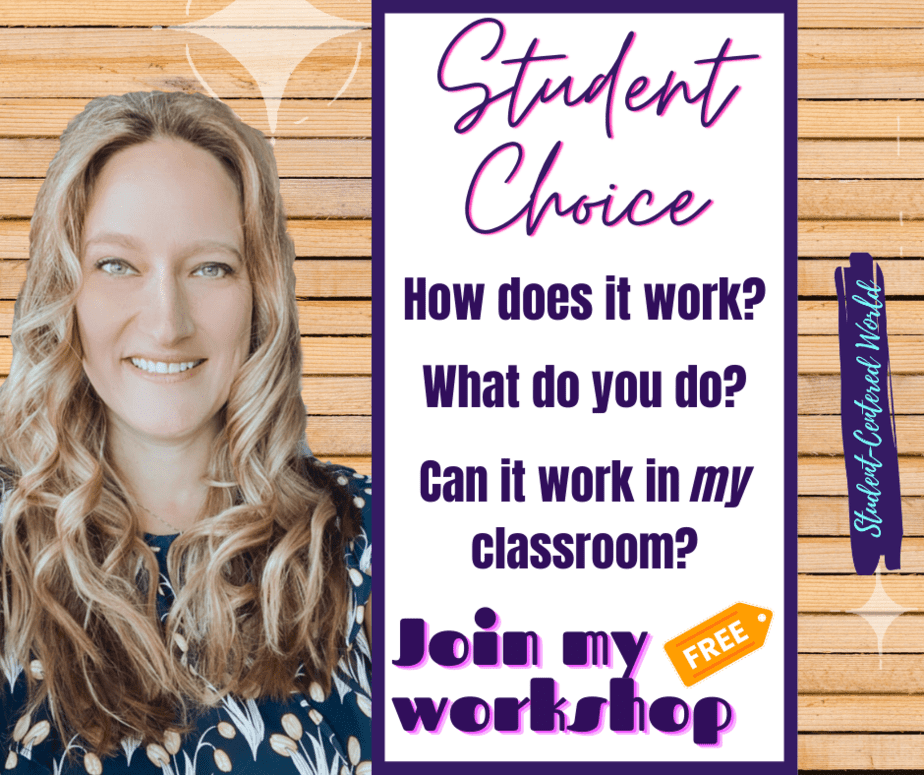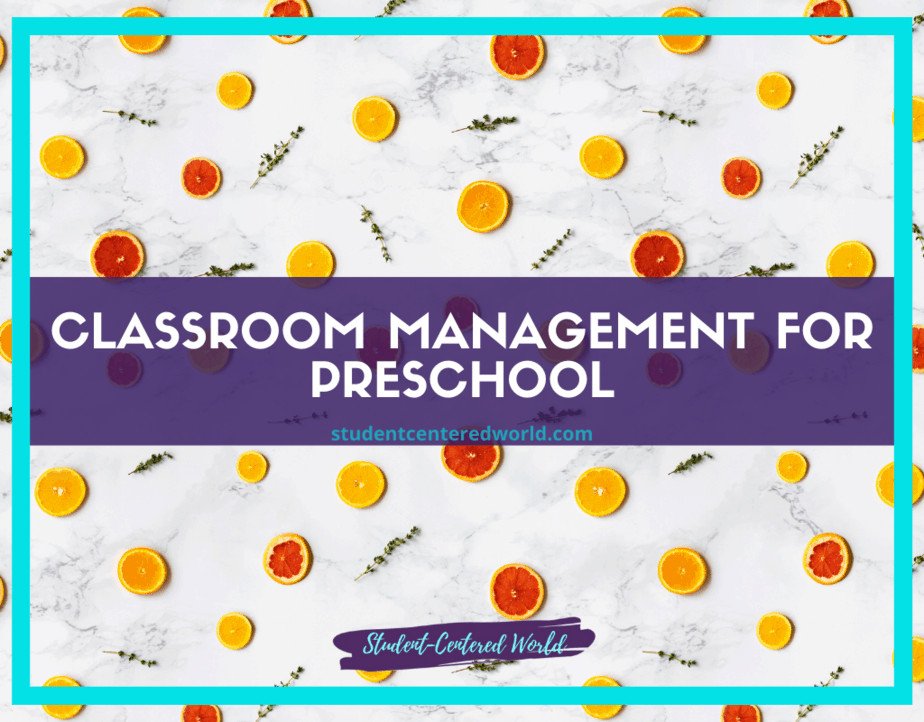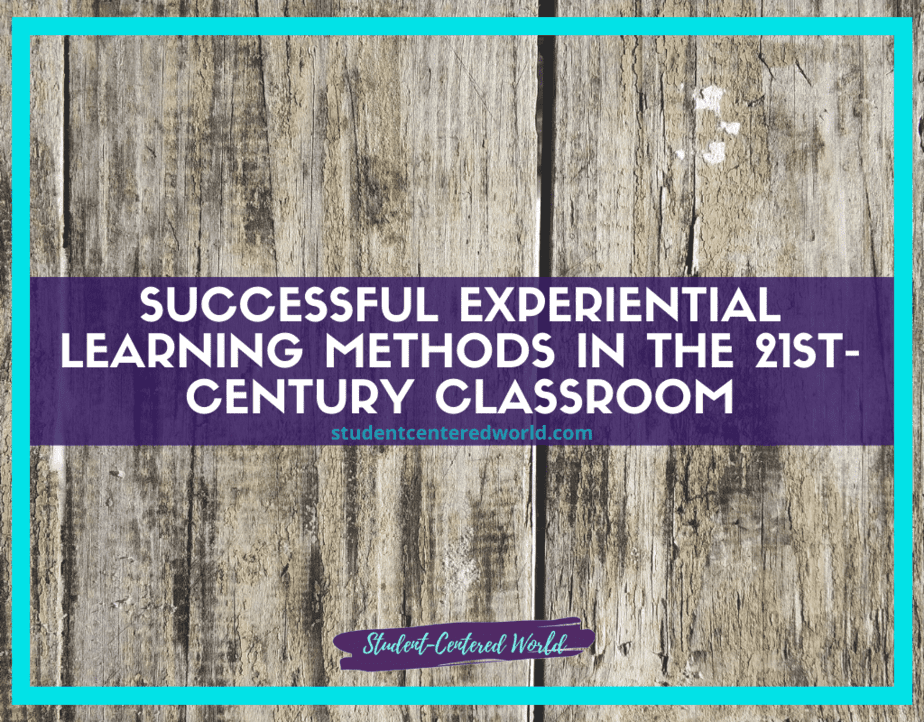Creating a Fluid K-12 Student-Centered Curriculum with Earnest Teaching Strategies
A common misconception about creating a student-centered curriculum is about the teacher’s role in the student-centered classroom and if there are any core teaching strategies in play. Many people think of student-centered teaching as the easy way out for a teacher as they print off some worksheets and camp out for the class period.
This couldn’t be further from the truth.
Though most of the active work of lesson planning goes on behind the scenes (and it takes a LOT of prep work to have the student-centered model running smoothly!), the teacher is not home free once their students walk in the door. Student-centered teaching is probably one of the most rewarding ways to teach.
(This post may contain affiliate links that won’t change your price but will share some commission. As an Amazon Associate, I earn from qualifying purchases. Please read our disclosure policy for more information.)
Student-Centered Curriculum in the Everyday Classroom
So then what does all this mean for the teacher? If an educator engages in the concept of student-centered curriculum, how do they run his or her class? Are there true core teaching strategies that are utilized? Does the teacher even do anything? Do the students even “get it”?
Well, all of this honestly depends on the students in any given classroom. In the beginning, it is important to be holding their hands metaphorically through the process.
I generally plan out activities day-by-day and we work on them together (and this is what I teach in my course “A Passion for Progress: Being a Rockstar Teacher in a Stressed-Out World“). As time progresses, the activities become longer and more open-ended. The students receive more and more choices in what they are doing and though
I am accessible for any type of clarification they need, I have in essence “trained” them to be off to the races when they walk through my door. It’s like a tipping point once this happens, and it is a beautiful thing to witness. It truly is student-centered learning at its finest hour with a student-centered curriculum.
Once the students get to this point in the system, often I am found at my desk monitoring what the students are working on digitally. If you are using EdPuzzle or Google Classroom, for instance, you have real-time monitoring of exactly where your students are in their process.
If they are working on something hands-on (ad), I am taking notes from a distance on where each student is on their own timeline. The key to a student-centered curriculum is constantly collecting data and crafting how the class will be proceeding in the coming days based on what they are seeing.
Going quicker than expected? Slower? Are the students collectively getting hung up on something, whether it be a concept or an activity? I use all of this to drive the class moving forward with a student-centered curriculum.
Implementing a Student-Centered Curriculum
Your students may not be honest about this if you ask them, but if you’re watching them in some form without them realizing it, it becomes crystal clear what their thoughts actually are. It is important to be engaged in their learning process without them noticing….creatures in their “natural habitat” if you will.
Not always, but sometimes the best way to see how something is progressing in the classroom is by making the students believe no one is watching their student-centered curriculum.
It makes me realize that the activity that I have them working on is simply not up to snuff….we’ve all been there. Maybe they’re just not feeling it or maybe it’s too difficult for them.
Regardless, it’s not working and why try to trudge through with something that no one is enjoying? The important thing to remember in a student-centered curriculum is that the educator needs to be flexible; the trick is to try to make the change seamless and like it was planned, but every once in a while you need to be real, through your hands up and let them know you’re changing up the game.
They don’t see it as weakness….generally, they see it as a relief (and I have gotten some pretty hearty “thank you!”s when I’ve gotten to that point). Allow your students to help guide your student-centered curriculum!
Now, if we’re all living in the real world and not fantasyland, I can say with full confidence that once your students have bought into student-centered curriculum instruction and the core teaching strategies you have put into place and are trucking through say, day 4 of a project, they may not need your assistance…or if they do, it’s concise and they know exactly what they need you for.
I like to make sure that at these moments, I am not accidentally micromanaging them. I let them off to explore on their own a bit. They know I’m nearby if they need me, but I am not going to hover.
I know in many circles, they say that the teacher should still be heavily involved at all times. I don’t necessarily agree with that. Even the Mama Bird gives her babies the boot from the nest when she knows they’re ready.
I want to see how these kids who understand the student-centered curriculum and are working the processes can do on their own. If I see them struggling, I will make sure I am doing what I can for them, but can they really grow (ad) in any way if they’re being constantly managed and not able to try things out on their own?
This is a concept that so many of the kids that have gone through our classrooms have been missing in their lives and it does them a HUGE disservice moving forward into the world. All educators need to make a student-centered curriculum part of their core teaching strategies for the benefit and growth of our students.
Again, #studentcenteredlearning is all about honing in on your students’ soft skills and 21st-century learning competencies (ad). If we are telling them exactly what is expected of them and micromanaging them with those expectations, those skills are not being crafted as well as they could be.
They need to be able to take direction and determine how to solve the problem they have been given in a way that they will perform their best.
So many of today’s Generation Z have the drive to do this, yet we often stifle their ability to do so in the classroom by not utilizing a student-centered curriculum. Let’s do what we can to make sure that we are preparing this newest generation to go out into the world in front of them and not only do great things but do them well.
Give them a task in the classroom and let them run…they’re up to the challenge. You might even be surprised at the results you receive as your expectations are surpassed in ways that you didn’t even know your students were capable of achieving.
Teaching an Old Dog New Tricks…or At Least Reminding Her
For teachers who have been in the field for some time, it is intimidating to think about transitioning from teacher-centered to student-centered learning and what those core teaching strategies may be. It is hard to stretch so far outside of one’s comfort zone, but from teachers who have done this, it is well worth the initial discomfort. The differences in student-centered curriculum versus teacher-centered education are distinct, but for the educators that have made the leap, it is a complete game-changer in (and out of) the classroom.
A perfect example is an excerpt below from Deborah Baldwin:
When I expressed interest in blogging on the subject of student-centered curriculum, I wasn’t sure if I even knew what it meant. What does it mean to be a learner-centered teacher?
You see, I am recently retired from the classroom. I taught theater classes to every grade level for thirty-eight years. Shouldn’t that be enough experience to know the definition of student-centered learning? Did I teach drama with a student-centered approach? Could I be considered a learner-centered teacher?
Quite frankly, teaching methods come and go, terminology changes, gets a new spin, or maybe fluffed up to become the next innovative educational trend. After a while, if you have taught any number of years you have used several methodologies which are similar. This is not a weakness however, it is a strength. Education methods change with the times and our students living in those times.
I admit I was concerned that in the two years since I stepped out of the classroom, I was already out of the loop. I quickly researched the subject. Whew! My worries vanished in the first two minutes of perusing a few education websites.
What Does it Mean to be a Learner-Centered Teacher
According to an article found here at EdTechReview.in, “In student-centered classrooms, students are the focus and they play the central role where they are actively engaged in their learning process in a collaborative nature along with their peers and under the guidance of their teacher.”
When I read this, I laughed at myself for my earlier befuddlement. Of course, drama class has a student-centered curriculum! How could it not? According to this, I was a learner-centered teacher. Yet, I was puzzled.
Isn’t all learning focused on the student? The answer is a polite, “ no.”
In my opinion, what makes a student-centered curriculum a cut above traditional learning is the collaborative nature of the process, accountable talk between students, and independent learning centers.
Sometimes life hands you an experience you don’t understand until many years later. This is one of them in my life.
Making the Transition to Student-Centered Curriculum
Many years ago, I was fortunate enough to become a director of the youth theater at the same time that I became a teacher. I would teach junior high English classes during the week and direct plays on the weekend.
When I began my teaching career, there were very few drama teacher jobs open and the job market was bleak. It was the late 1970’s and a glut of teachers sought employment. In college, I trained to become a professional actor. The professional acting gigs were limited too and Broadway was on a downswing.
I’m glad I listened to my father. He advised me to attain my teaching certificate so I would have something to fall back on if the acting profession didn’t work out. Over time, I found the professional theater world wasn’t my cup of tea anyway, and teaching better suited me.

I taught English for three years. I never student taught the class and English was one of my minors in college. Like most beginning teachers, I was excited but overwhelmed and intimidated by my responsibility.
Those years were some of the most difficult in my life for various reasons, both personal and professional, yet I gained insight in a way I never have again.
For a creative person like me, the day-to-day teaching of grammar and sentence structure was drudgery. I never admitted it to anyone, however.
Almost out of desperation on my part, I began to change my teaching methods to ones that I thought were more fun and exciting (unknowing moving towards a student-centered curriculum). I knew I needed to change my core teaching strategies if I was going to make it.
If we had to learn where to put a semicolon in a sentence and how to use commas, by darn, we could make it more interesting.
This would be the beginning of my learner-centered teacher experience, but I certainly didn’t realize it at the time. I just wanted the class to be more interesting for everyone!
I noticed the students enjoyed working in groups on just about anything I put in front of them. When they entered class, they seemed happier and enthusiastic, something that wasn’t occurring before my desperate move.
More than anything, I knew if they were like me, they learned best if they were engaged with a student-centered curriculum. I began to allow students to learn together certain subjects in the curriculum—creating comic books about a science fiction book by studying both, for example.
It did my heart good to see students who otherwise might have been lost in a regular class become engaged in their learning because they were discovered with their peers rather than alone. This simple movement of core teaching strategies made all the difference in the world.
The classroom was always noisy. A teacher friend of mine said my classroom was, “organized chaos.” She was correct! I liked it that way until I retired.
On Saturdays, I would do the same thing with acting students on a stage. One of my first productions to direct was a play version of Pinocchio (ad). I remember having the students look at photos of marionettes and come up with the physicality of the puppet characters. (Remember, we didn’t have VCR’s yet or Netflix. Maybe that was better?)
Twelve years later after staying home with our young daughters, I returned to the classroom (now a drama teacher). I noticed other educators were using a student-centered curriculum and I wasn’t alone in being a learner-centered teacher. This relieved me not only for my own sake but for that of the students that they were both receiving and understanding the student-centered curriculum.
Obviously, it wasn’t my doing which made this magically occur for other teachers. My guess is other beginning teachers were doing the same in their classrooms. We were part of education reform in our high school years when teachers were attempting to make their subjects more engaging and allow us to take semester-length classes in certain subjects. I took a semester course in the study of Russia, for example.

A drama classroom is always some version of a student-centered curriculum. Humans are creative beings and require the need to make choices.
It is not uncommon in a drama classroom to see several groups of students researching theater history in a variety of ways—one group is building a small Elizabethan stage, while another is acting out a Realism play, and another is creating Greek masks.
By collaborating with another, the students must discuss and concede and acquiesce to their peers. If for no other reason than the aforementioned ones, a student-centered curriculum is vital for our students as they enter the job force.
As long as the teacher gives clear instructions and expectations, it is very acceptable to me for students to educate themselves on the subject by which they are inspired.
This is the exact purpose of a student-centered curriculum. It is not difficult to be a learner-centered teacher…it just takes a mindset change and a shift in your core teaching strategies.
Another part of the student-centered curriculum environment is helping students to become accountable for their learning and conversations.
When I taught sixth graders about the origin of theater, the students discussed its possible beginnings by quoting the information they learned from studying it with a partner. Sometimes their conversations were as thought-provoking as any college theater appreciation class I taught.
For several years, students used software that created a play with comic book characters. It was sensational! Not only did the students learn how to craft a play, create characters, and design a set, they learned new computer skills. There is very little more freeing for a student than to learn something new with very little help from a teacher. Independent learning is a top priority in student-centered learning and student-centered curriculum, in my opinion.
The moral of the story is this—even an old dog can learn new tricks. Or maybe she thought she forgot she knew the trick. Or maybe she thought she forgot and then remembered she knew the trick but forgot it again…that happens, you know.
However, any way you look at it it is easy to remember the precious moments of my teaching career by reflecting on the many student-centered curriculum aha moments of my own and my successful shift to becoming a learner-centered teacher.
(Thanks for that, Deborah!)
Student-Centered Curriculum and Parents
There is a huge stigma around phone calls home from school. Immediately, the vision is that a student is in trouble of some sort and parental intervention is necessary. But honestly, when should a teacher call home? It is much more beneficial to be proactive.
What does that mean? Plainly stated, it is more proactive to reach out to families consistently, before there is a problem. You may think it is easier said than done to make a frequent teacher phone call to parents but think again.
I remember having teachers in school who assured us that they would often call home to talk about good things, not just bad things, as a part of their core teaching strategy. I don’t recall that ever actually happening.
As an educator, I totally understand how difficult that can be to keep up with it. So many times, we are just trying to stay afloat. However, there are two things to consider here. One, don’t make promises you can’t keep. Don’t tell your students you will call home because one may be pining to get that positive phone call for a variety of reasons, and when it doesn’t happen, they can in essence “give up”.
Once this happens, it’s extremely hard to get them back. Not only do they not believe your word, but they’ve already been trying and it’s been for “nothing” (we know it’s not actually for nothing, but this is from the perspective of a student).
So, When SHOULD a Teacher Call Home…and Should They Actually CALL?
If you’re anything like me, phone calls can be a little uncomfortable. You may have just a set time to make one and that can go long, or a missed call can be returned at an inopportune time. This somewhat takes away from the luster of the engagement. You want to make sure you’re making the magic happen, but sometimes the universe doesn’t quite allow it to happen in the constraints that you have at your disposal.
Because of this, I found a workaround that is like a miracle. I designed simple postcards to mail home. Once a week, I pick a student from each of my classes and send their family a postcard that highlights something special that the student did, or has been doing (or even if there has been a noticeable improvement).
This, I find, is even better than a phone call.
It might not be the one-on-one moment that an actual conversation would have, but it is something that is tangible and lasting and works with a student-centered curriculum. It is something that can be hung on a refrigerator or passed around at a family dinner. It becomes a source of pride and that sometimes is even better than a moment that may have to be cut short due to a lack of time (or the wrong person being spoken to for the proper praise).
I found a cute background and a great quote to type over it, made it postcard size (which prints out 4 onto one sheet), and then copied them onto cardstock. I cut them out and there it was. On the other side, I wrote my note on the left, put the student’s information on the right, and into the mail it went.
Incorporating this as an “at home’ aspect of my student-centered curriculum helped parents to buy into what was going on in the classroom, too.
The nice part about doing it this way is that postcard stamps are not as expensive as regular stamps and also anyone who sees the mail can see the message. It’s a way to brag a bit on your student to anyone who can see the card. This is something that may not happen when you speak to just one person.
Let me tell you….when I send those postcards out, within a day of them arriving at a student’s house, they come into class BEAMING. I’ve heard anything from a simple thank you to overwhelming gratitude because that little note got them out of some other trouble they had gotten into (and I think, as former kids, we can all appreciate that lol!). They are a little more focused and put in a little more effort into the student-centered curriculum than before.
…but when should a teacher do this?
The key to knowing when a teacher should call home is also to make sure you’re not only focusing on the timing but that you’re picking the correct kids for the experience at that moment and doing it in congruence with your student-centered curriculum. This may mean not only picking the “good” kids but also those who can be a little bit of a pain in the you-know-what. The kids who may not usually get good calls home.
Knowing that someone has something good to say about them may make all the difference in the world for a number of reasons. I remember once I had a parent come in on Back to School Night and ask if I had sent her a postcard by mistake! I laughed and talked about how much I actually enjoyed having her son in class (he was a knucklehead, but he did his work, and I appreciate that….I’ll take a class full of goofballs that actually try any day of the week).
She was a little taken aback by this but was completely appreciative.
Think about the little things you can catch each and every one of your students doing throughout any given day. You can jot these down, create some type of spreadsheet, or just make a mental note. I always kept a list of the students whom I had sent cards so as to not duplicate unless it is completely warranted (and sometimes, it totally is. It’s a judgment call, but I try to spread the love as much as I can).
I also make sure not to actually talk about the fact that I do this in class as part of my student-centered curriculum. Sure, the kids talk and it gets out amongst friends, but the last thing you want is to have a kid wondering why they haven’t received a card….or realizing that they’re the last one who received one in the class. I have never had an issue with it becoming a full class discussion or anything like that, but somewhat of a “secret conversation on the side”.
Honestly, this is such a simple thing to do (and it honestly takes less time than an actual phone call), but it makes all the difference in the world in your classroom. So to answer the question: when should a teacher call home? The answer is early…and often. This helps mold together the entire puzzle of the student-centered curriculum.
Student-Centered World Podcast Transcript
Below is the transcript for the Student-Centered World Podcast Episode 41 “Grading as You Go with Student-Centered Learning”
Hey friends, and welcome to the Student-Centered World Podcast, where you might be listening while you are grading papers or in lieu of grading papers. But I wanted to talk about grading papers today. It seems like that is usually the least liked part of being a teacher. I wanted to talk about a way that you can make it where it’s not so bad.
Welcome to the Student-Centered World podcast where we talk about all things hands-on teaching and keeping your energy and sanity in the classroom. This teacher turned consultant is making it her mission to help as many teachers as possible become the best version of themselves and keep their passion for teaching on fire. It’s her hope that we never forget why we desire to have a passion for educational progress. This is Student-Centered World, and this is Jenn Breisacher.
So, I’m not going to get into all of the possibilities today. But I do want to talk about how much grading changes when you adapt the student-centered curriculum model of teaching. So, for starters, homework, completely different. How many of you assign homework and you basically just give it a pass/fail, because you can’t promise if the kids have done the work, you know if they don’t have the work and all the different issues that we know that come up with homework.
When you’re doing a student-centered curriculum, you’re working with a flipped classroom type environment and you’re giving assignments that the students are completing on their own time, but you are able to see as they’re completing. Usually, they are tech-based in some form or another. I go over all of the different ways to counter if kids don’t do the homework, if they don’t have tech at home etc., etc., in a Passion for Progress but taking away all of the negative aspects of what could go wrong.
The students are working on assignments at home that you are able to see them working on in real-time, that are grading themselves in real-time, that you can see exactly where students are struggling, or are doing really well. You can plan your lessons appropriately based on that.
So, if you’re using the programs that I teach, then all of that is creating for you. So, you take away that element of needing to actually grade every single assignment when you’re in the classroom, while the students are working, you are doing standards checks, you are monitoring their progress, you are giving them moments to show what they’ve completed.
Again, this is all stuff I kind of explain more in A Passion for Progress, but you have all these elements where you are actively either giving points or marking standards or doing various other little pieces of grading that can add up and you would figure out how to add that up in ways that work for your students and your student-centered curriculum.
How to Make it Work
So, for instance, that sounds like a little bit of mumbo jumbo, if you don’t understand what I’m talking about. A lot of times, if I would give my students a project that would last several days, they would get a criteria sheet saying on day one, you want to be able to complete this. On day two you want to be able to complete this. I would say to them 10 minutes before the end of the block, I’m going to come around, I’m going to see where you are. As long as you’ve accomplished what you need to accomplish, you’ll get the points for that day.
So, they might get a 10 out of 10 or if I saw them off task a lot, I could take off points, or if they said they were working really hard, but they didn’t quite finish it all rallied in. So, you could be writing that down on a tally sheet for you, you can write it on a sheet for them that they have to turn in at the end in order to get the participation grade.
There are a lot of different ways that you can look at that and that’s just one particular scenario. There are so many ways that you can do this in the classroom every single day. Then, of course, rubrics, rubrics, rubrics make your life so much easier. It takes a couple of minutes to develop a really solid rubric, but it basically states if you do what you were supposed to do, it’s in this column.
If you go above and beyond, it’s in this column. If you don’t quite hit the mark, it’s here and if you weren’t even close, you know it’s down here.
You can easily see where a student is in their criteria and just circle a number or circle a column and add it up. It makes grading so much faster. There are also so many apps out there and programs out there that are self-grading. So, if you do have a typical worksheet or something that is multiple choice, or you know all the different things that we have in our teacher toolbox.
There are programs out there that you can put in the answer key and as the students answer it, it grades it for them. They like that a lot better because they get instant feedback and know where they are in terms of points and grades and all of the things that we try to not have them harp on. But let’s be honest, that’s kind of where they go. But it also makes it easier for us because then we can go in and see where they were, see where they struggled.
Not every assignment can be self-graded, not every single point can be circled on a rubric. But when a bulk of it can be, think about how much time you would open up to be able to do other things. Think about how little time you would actually need to be physically grading as we are so accustomed to in education.
Prior to switching to a student-centered curriculum, every day, I would collect worksheets or readings or questions or you whatever, from my students that I would then need to grade and get back to them fairly quickly if I wanted to have any type of relevance to what we were doing in the class. If you’re giving assignments that don’t have immediate relevance to what you’re doing in the class, you’re giving them busy work, ultimately.
I mean, there might be a lot of educational merit to it. But if it doesn’t build upon where you’re going, or what you want them to understand, or they don’t need to have that feedback to know how they’re doing to be able to grow on that knowledge it’s not as educationally sound as we would think it is.
I know certain schools have criteria. You need to have this percentage of classwork, this percentage of homework, this percentage of formal assessments. Every school does things a little bit differently. But you can work within those parameters and still make it where you don’t have to be grading all the time.
Your weekends are not spent on grading. You’re not showing movies in class just so you can grade. You’re not staying late, coming in early, using your prep period, just to try to grade. You’re using that time to do stuff that matters a little bit more to the development of your students or to your sanity.
How to “Grade as you Go”
So, I like to call this concept grading as you go. So yes, you do still collect stuff and yes, you do still grade it traditionally, but so much more of what you’re doing in a student-centered classroom is grading as you go. It’s spot grading. It’s making sure that standards are being met. It’s making sure that they are understanding the information, that they’re able to develop it further as time progresses, and that all interrelate in this student-centered curriculum.
Think about how much time you would get back in your life if you didn’t have to grade so much, but that you still had the same amount of points or more to put into your grade book.
Just imagine the possibilities of that alone. That alone is worth giving the student-centered curriculum a thought or a consideration. I can’t tell you how many teachers have said that they’ve gotten their lives back, lives that they didn’t even realize that they had, time with their family, time to exercise, time to read, time to do whatever, because they didn’t have to do so much of the monotonous stuff that we have been trained to think we have to be doing as a teacher.
Do we still need to grade? Yes, but we’re grading with purpose. We’re making sure that the students are learning and we’re assessing them appropriately in that way but we’re also making the grades have a purpose, we’re giving them assignments, and we’re checking how they’re doing on them to make sure that they know where they are and they’re growing. It’s not just something that you do but there’s the legitimate meaning behind it. When you think of it in that way and you shift your mindset a little bit off we’re not giving out assignments for assignment’s sake.
But there’s actual growth on each one of those assignments and each one has a purpose. Our way of grading their switches and makes it easier on us. It’s an entirely different ballgame that we’re playing. It lends itself to have those individual experiences and speak with every child and do all of the things that I have been discussing that are part of student-centered learning. It’s all a big puzzle and every piece is very important to the integrity of the entire system and part of that system is making it where your life is easier, and your life is less stressful. A lot of that is how you go about grading.
I know that’s so hard to wrap your head around and digest because it just seems so different and foreign from what we’ve all done for years and years. I promise you that it works and it’s amazing for all parties involved. So, I want you to take this week to look at how much you’re grading or that you have to grade or that you’re planning to grade, or that you just finished grading. Think about how much time you could have gotten back if you just switched up how you were doing things.
Stop Driving the Teacher Struggle Bus
Are you struggling with student engagement, apathy, or keeping your class on track?
💫💫 There’s hope! 💫💫
Join my free teacher workshop “Choosing Choice” and in just 60 minutes, you’ll craft a practical plan to revitalize your teaching. Discover the magic of student choice in boosting engagement, gain quick implementation ideas, and explore strategies for year-long success.
Unlike overwhelming workshops, my approach guides you in real-time, providing more classroom options, reducing stress, and giving you more personal time.
Plus, you’ll earn a 1-hour professional development certificate and have 7 days of access.
Don’t miss this chance to transform your teaching; click below to secure your spot now!
Author Contribution:
Deborah Baldwin is a recently retired award-winning drama teacher having taught drama for thirty-eight years both for the public and private sector. In addition, she has directed over 250 plays and musicals with children and adults alike. She is a rock star grandma to her granddaughters, a happily married wife, and mother to two grown daughters and one stepson. Her cat, Lala would like it mentioned Deborah is her handmaiden and serves her every whim. You can learn more about Deborah at her blog, Dramamommaspeaks, her TeachersPayTeachers store Dramamommaspeaks, or her Facebook page for her award-winning middle-grade book, Bumbling Bea (ad).






2 Comments
Malia
I,m excited to learn more, but how do I teach the standards? Do I choose one or two and give kids an open ended question? Do I gather resources that are useful and school appropriate and have them General examples of learning to meet the standard? I’m just really in need of some examples of how to accomplish that checklist my state and school demands That I meet.
Jenn
Hi Malia! I cover all of this from start to finish in “A Passion for Progress: Being a Rock Star Teacher in a Stressed Out World”. You can check it out here: studentcenteredworld.com/ap4p